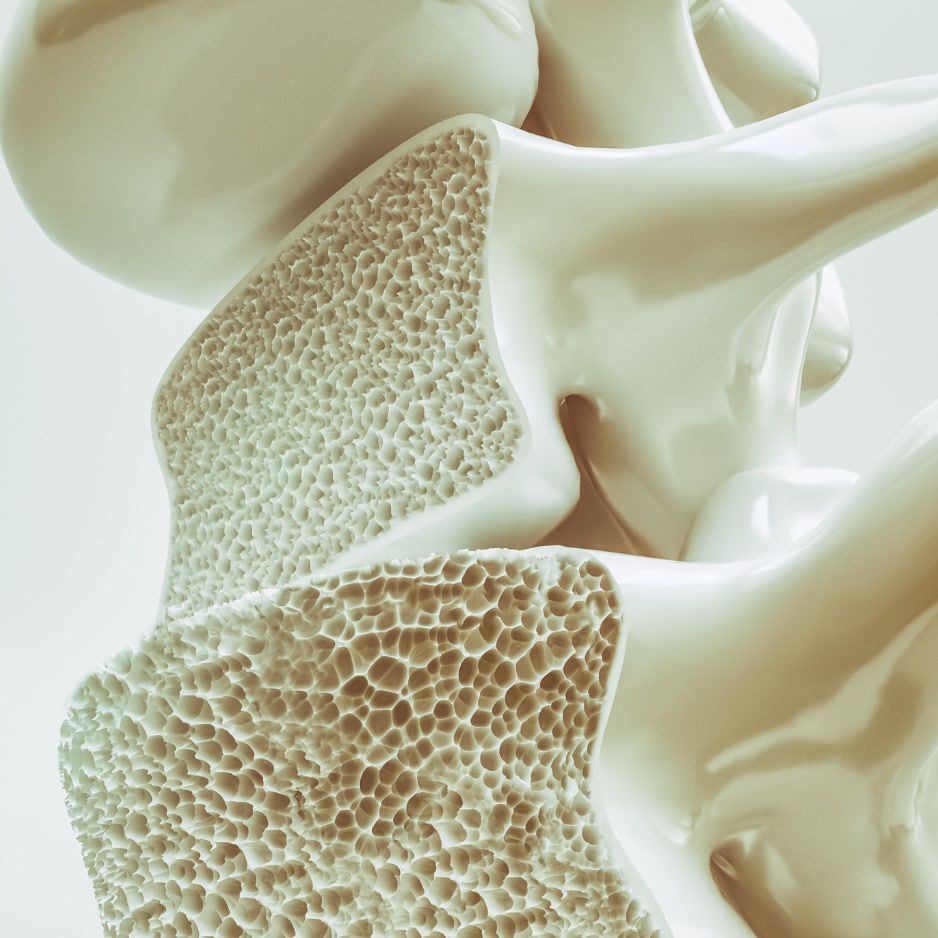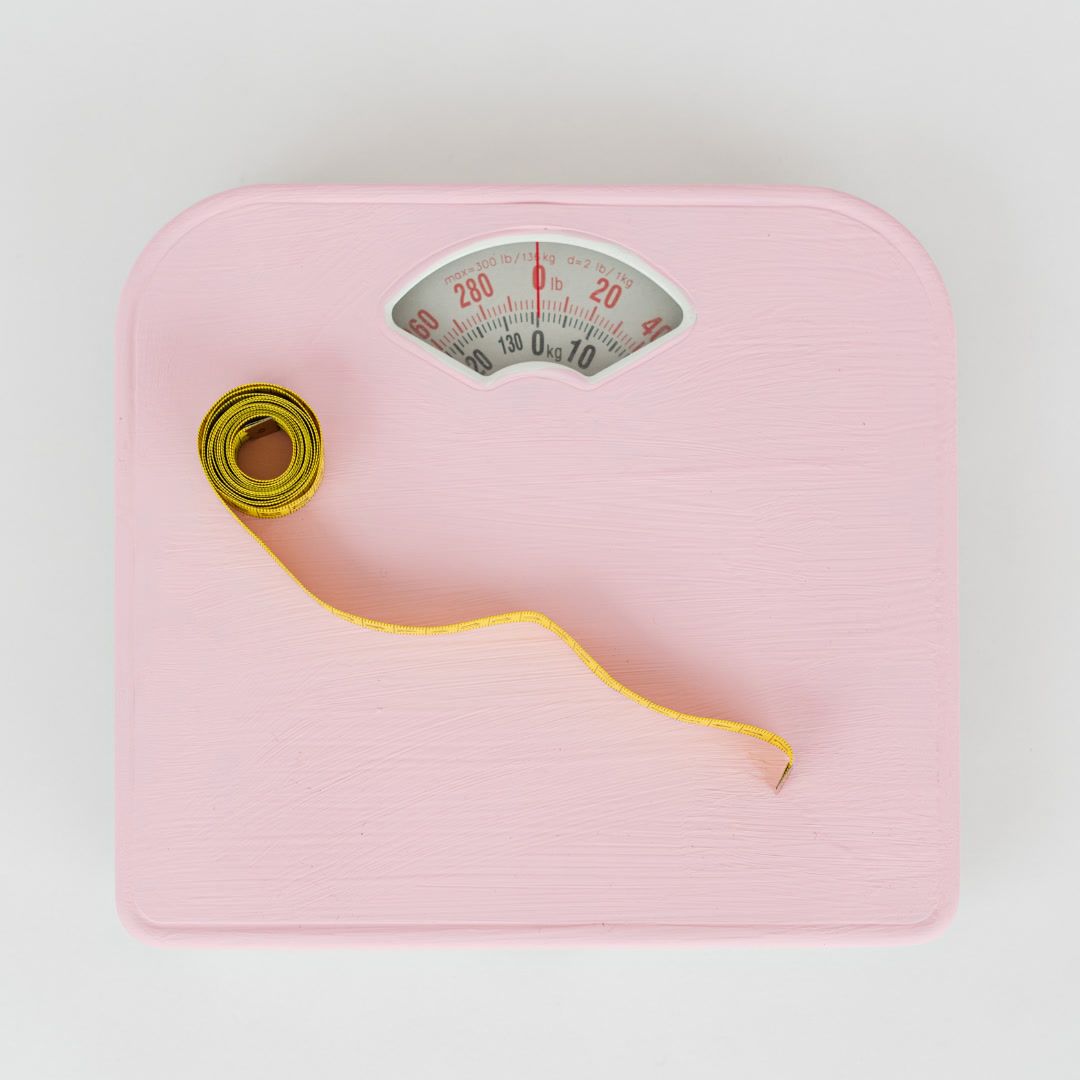Building Lean Muscle vs Bulk: What's the Difference?
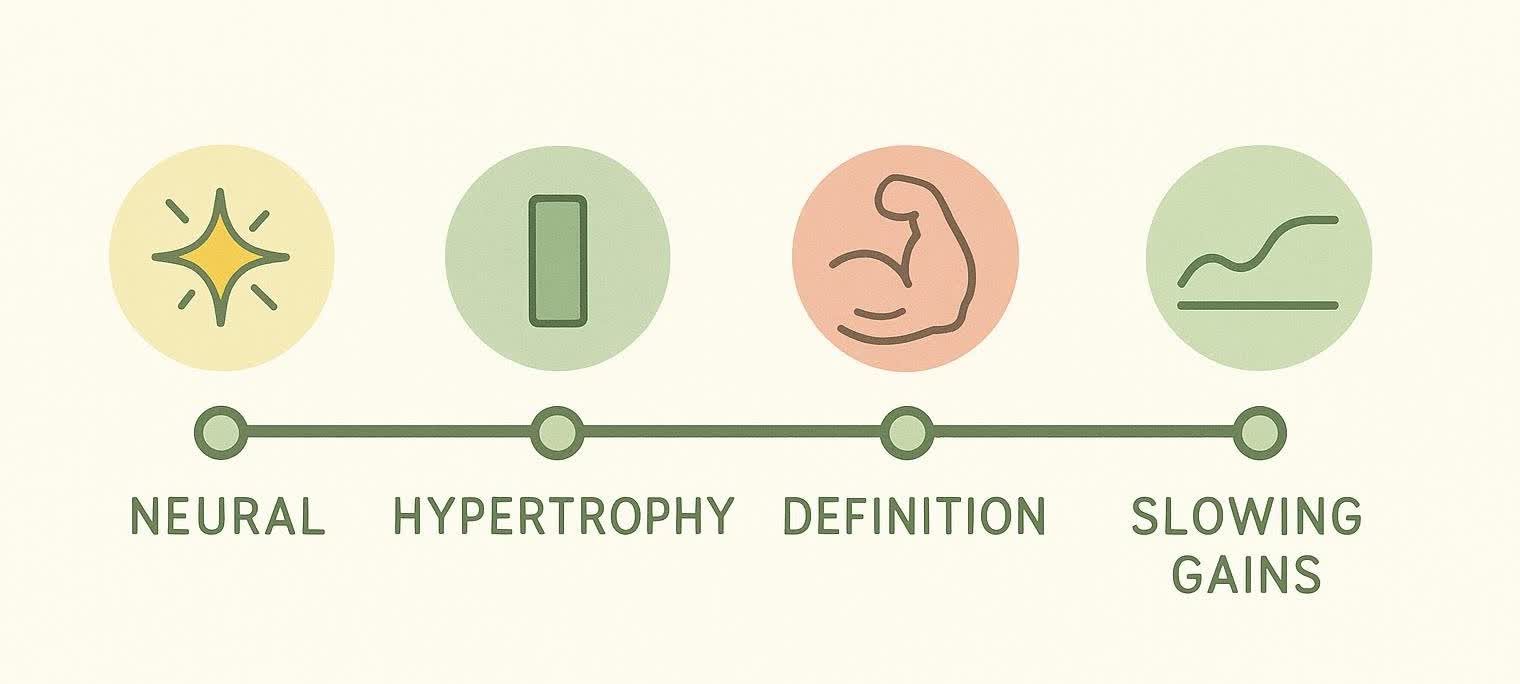
Lean Muscle vs Bulk Muscle: How to Choose the Right Path for Your Goals
Muscle is muscle—the real question is how much accompanying fat you gain or lose along the way.
The key difference between lean muscle and bulk muscle is the approach: lean muscle building uses a modest 5-10% calorie surplus to minimize fat gain while slowly adding muscle, while bulk muscle building uses a larger 10-20% surplus for faster muscle growth but with more accompanying fat. That mantra from the BodySpec coaching team sums up the lean-versus-bulk debate: you're always adding the same tissue, but your strategy determines how much extra padding tags along. Rather than focusing solely on "weight loss," the key is body recomposition—losing fat while maintaining or gaining lean tissue for better health, strength, and longevity.
This guide helps you decide which route fits your starting point, lifestyle, and body-composition targets—and exactly how to execute it.
Understanding Lean Tissue vs Muscle Mass
Before diving into strategies, it's important to understand what we're actually building. Lean tissue refers to muscle mass, organs, blood, tendons and ligaments, bone marrow, free water, and undigested food—essentially everything that isn't fat or bone tissue as measured by DEXA scans.
This distinction matters because many traditional weight loss approaches have little regard for preserving muscle mass, leading to what's colloquially called "skinny fat"—where body fat percentage stays the same or even rises as you lose weight.
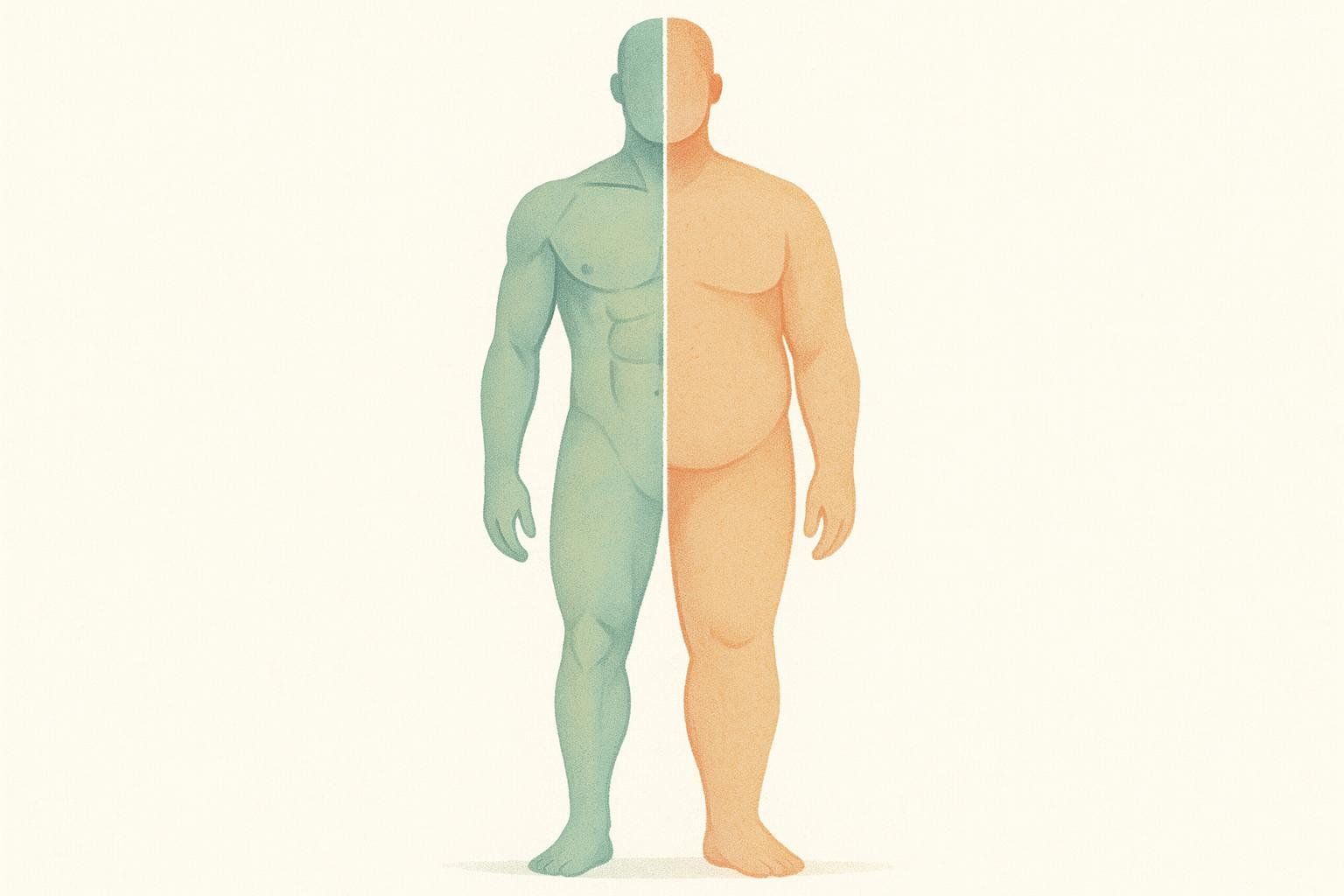
Quick Snapshot
| Goal | Calorie Target (vs. Maintenance) | Typical Rate of Weight Change | Pros | Cons |
|---|---|---|---|---|
| Lean Muscle (Lean Bulk) | +5–10 % | 0.25 – 0.5 lb per week | Visible definition year-round; minimal diet phase later | Slower gains, stricter tracking |
| Traditional Bulk | +10–20 % | 0.5 – 1 lb per week | Faster strength & size increases | Requires later "cut"; risk of excess fat |
| Lean Phase / Cut | –10–20 % | 0.5 – 1 lb per week | Reduces body-fat; improves insulin sensitivity | Hunger, risk of slight muscle loss |
Why the difference? Research suggests that when you increase a caloric surplus from roughly 5 % to about 15 % above maintenance, much of the additional weight gained is disproportionately fat rather than muscle (Helms et al., 2023).
Lean Muscle vs Bulk Muscle: Key Definitions
Lean Muscle
"Lean muscle" simply means skeletal muscle accompanied by minimal surrounding fat, so cuts and striations remain visible. Achieving it requires a modest calorie surplus, high protein (1 g per lb of body weight), and smart training volume.
Bulk Muscle
"Bulk muscle" refers to total muscle mass—plus the inevitable fat gained when you push calories high to maximize growth. The phase is typically supported by protein intakes around 0.8 g per lb of body weight to facilitate repair and hypertrophy while consuming a larger calorie surplus. Think of a lean bulk like adding muscle with a paintbrush, whereas a traditional bulk is more like using a roller—coverage is faster, but you'll get some paint where you don't want it.
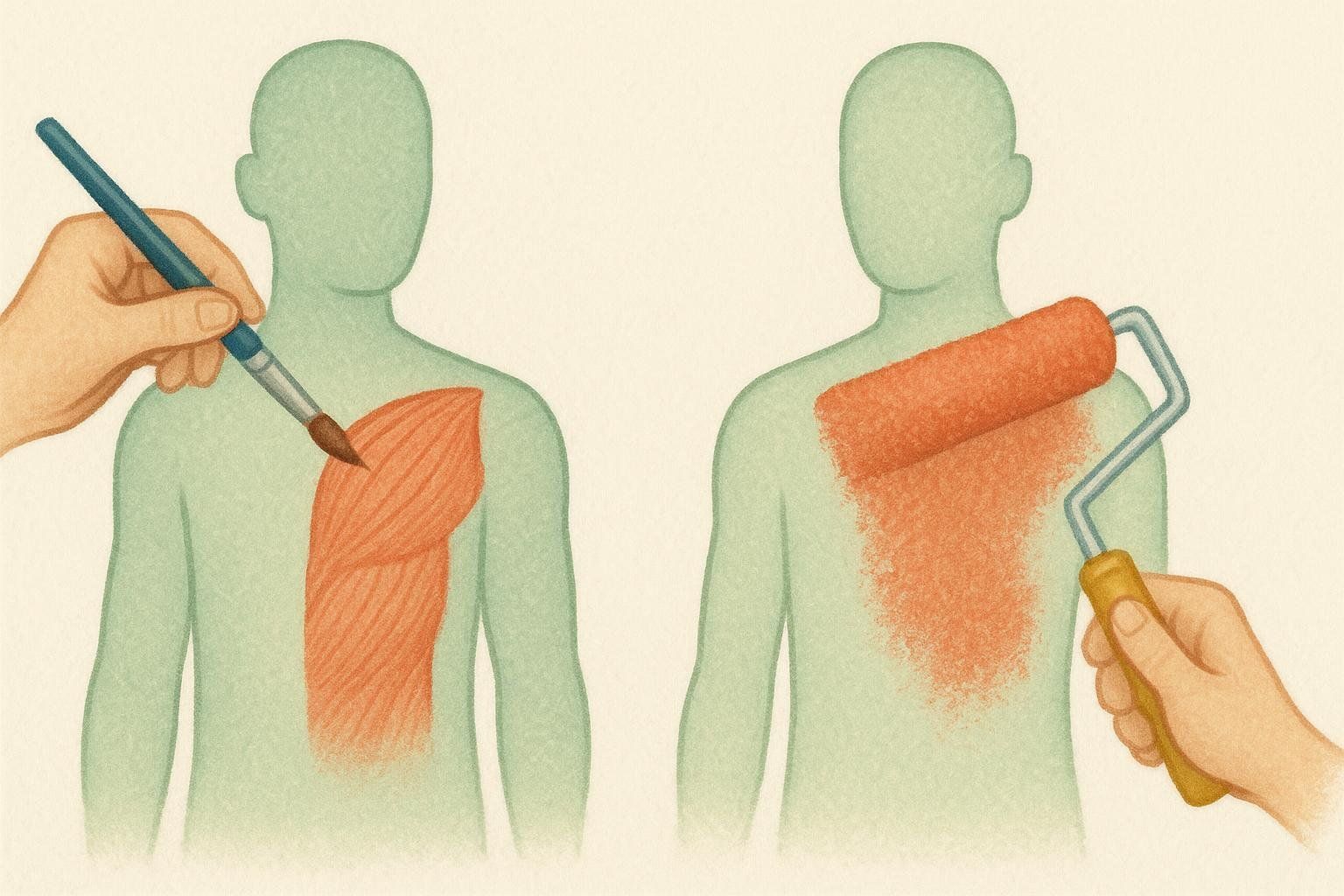
It's important to distinguish both approaches from a dirty bulk, which involves an unrestricted surplus.
Do You Need to Lean or Bulk First?
| Starting Point | Recommended Phase |
|---|---|
| Males > 20 % body fat, Females > 30 % | Lean Phase (slight deficit or maintenance recomp) |
| Males 12–20 %, Females 22–30 % | Lean Bulk |
| Males < 12 %, Females < 22 % but lacking muscle | Traditional Bulk |
Why these cut-offs? Higher body-fat percentages often correspond with reduced insulin sensitivity and a lower "nutrient-partitioning" ratio—meaning surplus calories are more likely stored as fat than muscle. Starting a bulk below roughly 15–20 % body fat improves the odds those calories rebuild lean tissue (Heymsfield & Cefalu, 2013).
Personas in Practice
- Fitness Newbie (18–24 y): Often presenting with low muscle mass and moderate excess body fat despite a normal scale weight—start with a lean bulk to add muscle while redistributing calories toward lean tissue. You'll find the recommended 3-day full-body split in the Blueprint Workouts & Macros section.
- Amateur Bodybuilder (25–35 y): Plateaued at ~15 % body fat? Run an 8-week lean phase to hit 10–12 %, then transition to a structured bulk for bigger lifts.
- Health-Conscious Adult (30–50 y): Short on time? Cycle 4-week lean-bulk and 2-week mini-cut phases for steady recomposition without long diets.
Evidence-Based Training Principles
Volume & Frequency
• 10–20 hard sets—sets taken close to muscular failure—per muscle per week yields near-maximal hypertrophy (Schoenfeld BJ, 2019).
• Total weekly volume is the main driver, but research suggests distributing that work across 2–3 sessions per muscle group each week improves recovery, maintains rep quality, and can boost growth compared with cramming all sets into one marathon session.
Intensity & Progression
• Use 6–12-rep sets for most work; sprinkle heavier (3–5 reps) and lighter (15–20) for fiber diversity.
• Add weight, reps, or sets every week—progressive overload drives adaptation and helps prevent age-related muscle decline (sarcopenia).
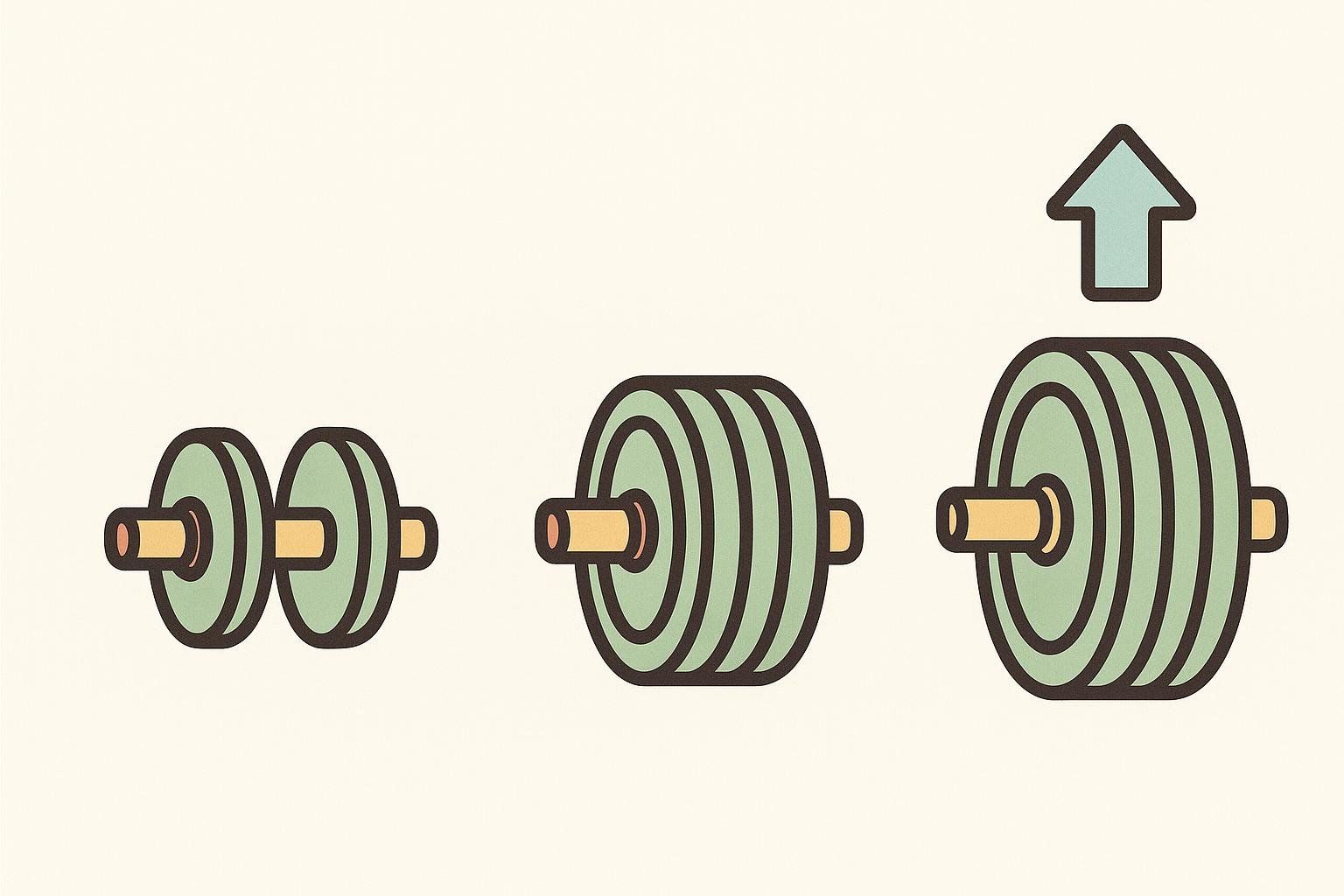
Getting Started: A Beginner-Friendly Approach
If you've never focused on muscle building before, it doesn't have to be daunting. Strength training is highly customizable and offers benefits beyond aesthetics—including improved sleep quality, increased lifespan, and enhanced immunity.
Top Tip! 1-2 total training days per week is a good start, and 3-4 is a great stretch goal.
Progressive resistance training is particularly effective for preventing sarcopenia. Some is better than none, and more is better than some. Showing up consistently is key, and you can add weight or resistance as your confidence grows. Check out this great resource for a beginner's guide to strength training.
Macro Calculator (Static Example)
- Estimate maintenance calories. A simple—but very broad—starting point is body weight (lb) × 15, which assumes moderate activity (training 3–5 h/week and average daily movement). Actual needs can vary hundreds of calories in either direction due to genetics, NEAT, and training load, so use this figure only as a placeholder.
- Track and calibrate. Log food intake and daily body weight for 2–4 weeks. If weight trends up or down, adjust calories by ±100–200 until stable—this becomes your true maintenance.
- Choose your surplus or deficit.
• Lean bulk: +5–10 % of maintenance
• Traditional bulk: +10–20 %
• Lean phase: –10–20 % - Distribute macros.
| Macro | Lean Bulk | Bulk | Lean Phase |
|---|---|---|---|
| Protein | 1 g/lb | 0.8 g/lb | 1 g/lb |
| Fat | 0.3 g/lb | 0.35 g/lb | 0.3 g/lb |
| Carbs | Remainder | Remainder | Remainder |
Alternative Protein Rule: For a simpler approach, eat as many grams of protein as you have lean tissue pounds. Not sure what your lean tissue weight is? Get a DEXA scan to find out!
Preserving Muscle Through Protein
Keeping your nutritional protein intake high enough helps prevent lean tissue loss in a calorie deficit. High levels of protein help preserve muscle mass by adequately fueling your body with muscle-building nutrients, preventing unwanted lean tissue loss from unbalanced diets.
Example (Traditional Bulk, 170 lb lifter):
• Maintenance ≈ 2,550 kcal
• Surplus (+15 %) → 2,930 kcal target
• Protein: 0.8 × 170 = 136 g
• Fat: 0.35 × 170 ≈ 60 g
• Carbs: Remaining calories → ≈ 462 g carbs
Need more detail on dialing calories? Check out Lean Bulk Essentials and these easy-to-digest protein tips.
Supplement Stack Cheat-Sheet
| Goal | Core Supplements | Science-Backed Dose |
|---|---|---|
| Muscle gain | Creatine monohydrate | 3–5 g daily |
| Recovery | Whey or vegan protein powder | 20–40 g/serving |
| Energy | Caffeine (pre-workout or coffee) | 3–6 mg/kg |
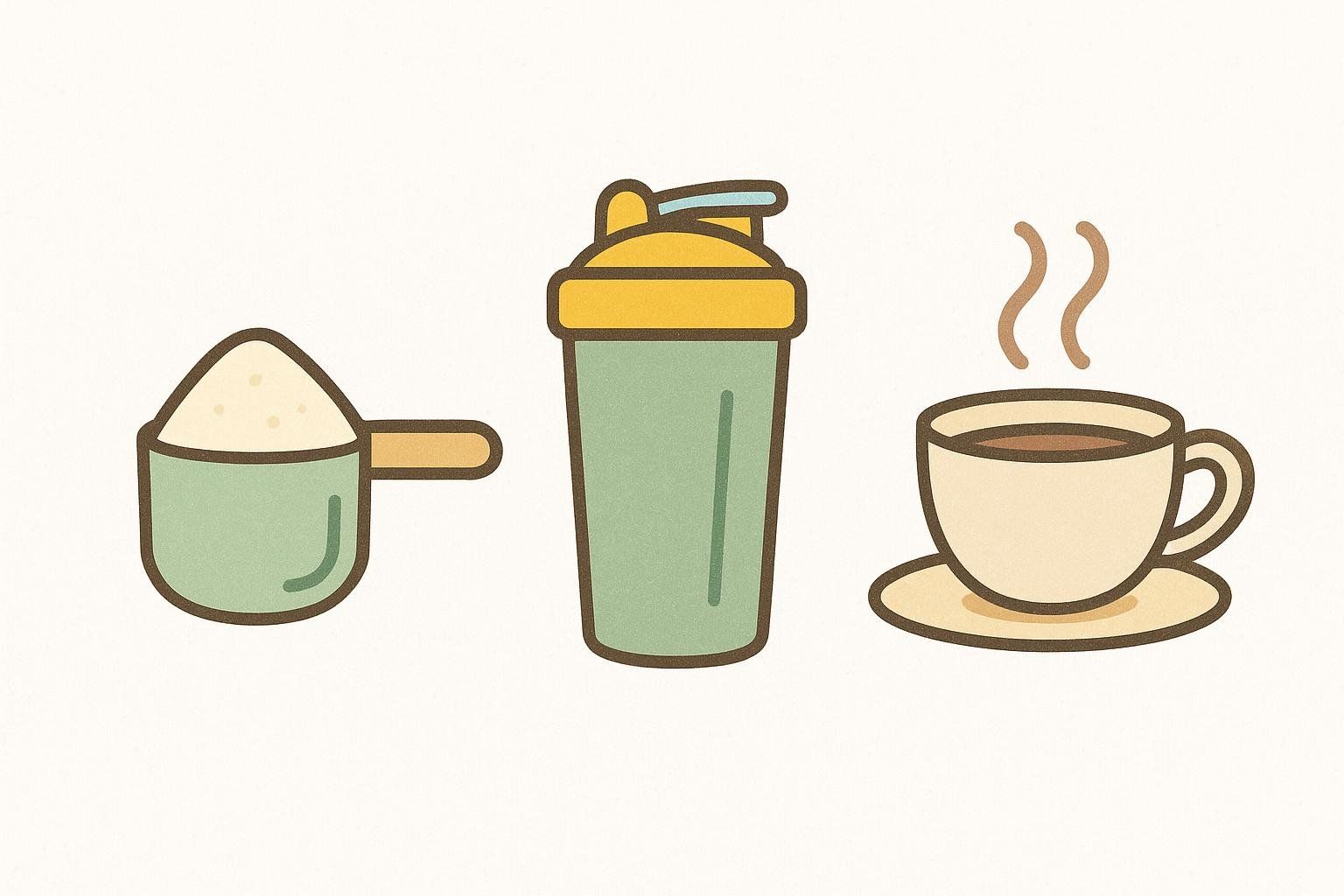
(Consult a healthcare professional before starting any new supplement.)
Tracking Progress with DEXA
Many people track body-composition changes with smart-scale BIA, skinfold calipers, or 3D body-scanning apps. These tools are convenient but can swing several percentage points due to hydration, operator error, or lighting. A BodySpec DEXA scan uses low-dose X-ray beams to quantify fat, lean tissue, bone, and even visceral fat with medical-grade precision—making it the gold standard for seeing whether your lean-bulk or cut is truly working.
DEXA scans can help you pinpoint regional changes in your lean tissue as you work towards your goals, with data that accrues and compares side by side on our reports.
One client documented noticeable increases in muscle while keeping fat gain minimal during a lean-bulk phase (read Luke N.'s success story).
Book your BodySpec DEXA scan—our mobile vans come to dozens of cities every week.
Blueprint Workouts & Macros
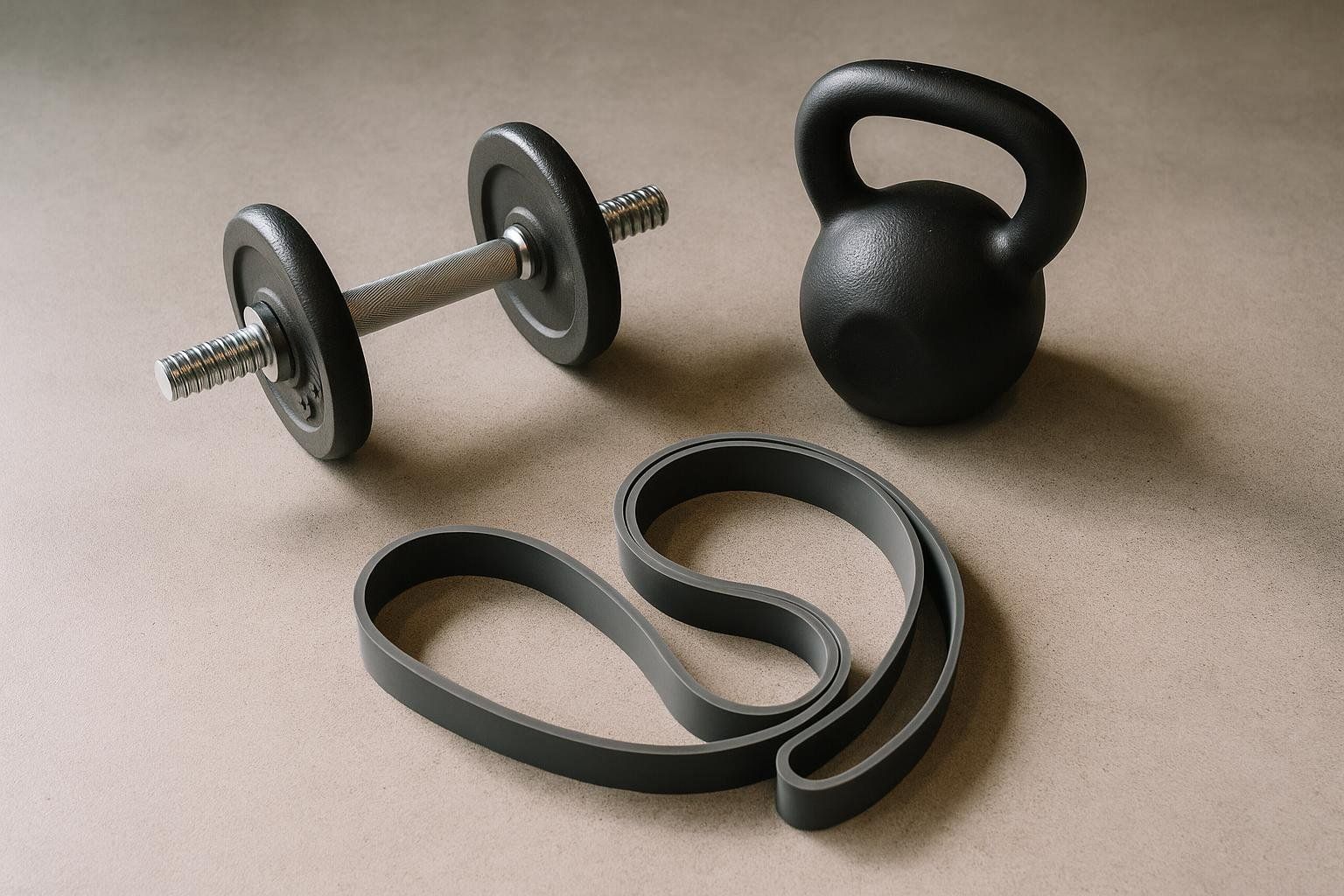
All sets × reps are per exercise unless noted otherwise.
1. Fitness Newbie: 3-Day Full-Body Split
| Day | Main Lifts | Sets × Reps |
|---|---|---|
| Mon | Squat, Bench Press, Barbell Row | 3 × 8 |
| Wed | Deadlift, Overhead Press, Pull-Up | 3 × 6 |
| Fri | Lunge, Dip, Face-Pull | 3 × 10 |
Calories: +5–10 % above maintenance
Protein: 1 g/lb
2. Amateur Bodybuilder: 5-Day Push/Pull/Legs Split
| Day | Focus | Example Lifts | Sets × Reps |
|---|---|---|---|
| Mon | Push 1 | Bench Press, Overhead Press, Close-Grip Bench | 4 × 6 |
| Tue | Pull 1 | Barbell Row, Weighted Pull-Up, Barbell Curl | 4 × 6–8 |
| Wed | Legs | Back Squat, Romanian Deadlift, Calf Raise | 4 × 6–8 |
| Thu | Push 2 | Incline Dumbbell Press, Lateral Raise, Push-Up | 3 × 12–15 |
| Fri | Pull/Legs (lighter) | Trap-Bar Deadlift, Face Pull, Glute Bridge | 3 × 12–15 |
Calories: +10–20 % when bulking; –10–20 % when cutting.
Protein: 0.8 g/lb in bulk, 1 g/lb while cutting.
3. Health-Conscious Adult: 2-Day Upper/Lower Program
Day 1: Upper Body
| Exercise | Prescription |
|---|---|
| Bench Press | 3 × 8 reps |
| Bent-Over Row | 3 × 8 reps |
| Push-Up | 3 × AMRAP (As Many Reps As Possible) |
| Dumbbell Curl | 3 × 8 reps |
Day 2: Lower Body
| Exercise | Prescription |
|---|---|
| Back Squat | 3 × 8 reps |
| Romanian Deadlift | 3 × 8 reps |
| Calf Raise | 3 × 8 reps |
| Plank | 3 × 30-second holds |
Add ≥ 8,000 daily steps for extra calorie burn.
Calories: choose +5–10 % (lean bulk) or –10–20 % (lean phase) based on goals.
Protein: 1 g/lb in both phases to safeguard lean tissue.
FAQ
Is lean muscle really different from regular muscle?
No—muscle tissue is always "lean." The term simply highlights low accompanying fat.
Can I gain muscle and lose fat together?
Yes—new lifters, those returning after a break, or anyone with higher body fat can achieve body recomposition with adequate protein and progressive training.
How often should I scan my body composition?
Every 8–12 weeks captures meaningful shifts without over-focusing on small day-to-day fluctuations.
What's the difference between weight loss and body recomposition?
Weight loss focuses on reducing total body weight, often at the expense of muscle mass. Body recomposition prioritizes losing fat while maintaining or gaining lean tissue for better health outcomes.
Take the Next Step
- Schedule your BodySpec DEXA scan to get highly accurate baseline readings.
- Read: Lean Bulk Essentials
- Explore: How to Be Lean & Strong, The Protein Primer, and Full Body Scan 101.
Your roadmap is set—choose your phase, track your data, and build the physique you want without guesswork.
